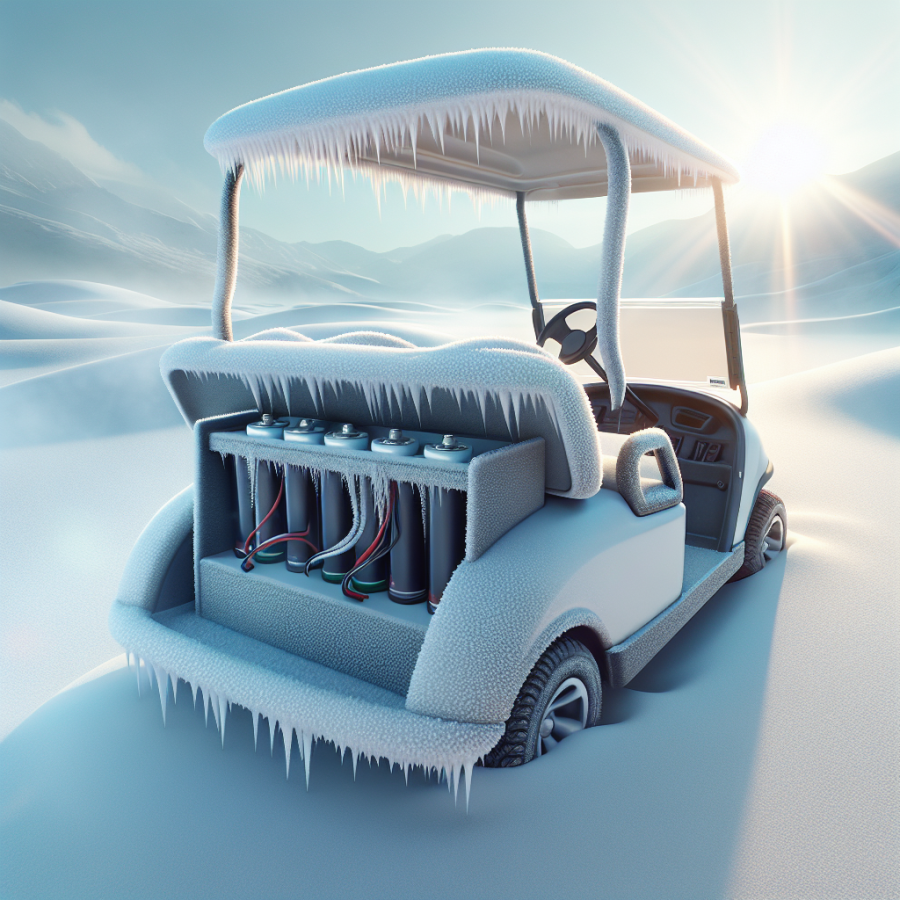Exploring the Susceptibility of Golf Cart Batteries to Freezing
Golf cart batteries, just like any other battery, are susceptible to freezing. The likelihood of this happening, how quickly it occurs, and the damage that it can potentially cause to the battery varies greatly depending on several factors: battery type, quality, age, state of charge, and the surrounding temperature.
The type of battery in your golf cart plays a pivotal role in determining its freeze resistance. Golf carts typically use one of two types of batteries: lead-acid batteries or lithium-ion batteries. Traditional lead-acid batteries are generally more sensitive to temperature drops compared to lithium-ion batteries. That's not to say lithium-ion batteries are impervious to freezing - extreme cold can cause lithium-ion batteries to lose capacity and hinder their performance. But they do fare better in cold conditions compared to lead-acid counterparts.
The quality and age of the battery also play significant roles in freezing susceptibility. A worn-out or low-quality battery will likely freeze faster in cold conditions compared to a new, high-quality battery. The reason behind this is simple. Higher quality batteries are designed and manufactured with materials that withstand temperature extremes better. Moreover, as batteries age, their ability to hold a charge decreases, making them more susceptible to freezing.
As a general rule, the state of charge of a battery is a major influential factor on its freezing point. The more charged a battery is, the lower its freezing point. For instance, a fully charged lead-acid battery will only start to freeze at around -70°F, whereas a fully discharged lead-acid battery can start to freeze at temperatures as high as 20°F. This difference can be attributed to the sulfuric acid in lead-acid batteries, which only separates from the water in the batteries at a discharged state, raising the freezing point of the battery.
Finally, the temperature and duration of the cold spell are significant in this regard. Batteries in regions with milder winters are less likely to freeze than those in regions where temperatures reach extreme lows and the cold spell lasts for long periods.
Understanding these factors can be beneficial in taking preventive measures. Keeping the battery fully charged, opting for high-quality and lithium-ion batteries when possible, replacing old batteries promptly, and providing insulation during cold spells can go a long way in preventing freezing.
It's important to remember that freezing not only temporarily hinders the performance of golf cart batteries but can also cause permanent damage. The expansion of liquid within the battery as it freezes can result in the battery case cracking.
Read also:
Where Golf Shirt Origins Lie: Tracing the History of the Stylish Sportswear
Practical Measures to Protect Golf Cart Batteries from Freezing Conditions
In freezing conditions, golf cart batteries are vulnerable to damage which can greatly impact their performance and longevity. The main concerns are that the harsh temperature can cause the electrolyte solution inside the batteries to freeze, leading to battery draining and possible cracking. Understanding the risk is important, but devising practical approaches to protect your golf cart batteries from freezing conditions is also essential. Here are practical measures you can adopt to extend the life span of your golf cart batteries during cold winter months.
Firstly, the primary enemy of golf cart batteries in winter is not just the cold, but the state of charge. A fully charged battery is less likely to freeze than a discharged one. This is because the electrolyte solution in a full battery has a considerably lower freezing point. So, you should keep your batteries fully charged whenever possible, particularly if the golf cart isn't being used daily during winter.
Another key precaution is to examine your batteries for cracks and leaks. When a battery freezes, the casing can crack, resulting in leaks of the electrolyte solution. Regularly check the casing for any signs of cracks. If you spot a cracked case, replace the battery immediately as damaged batteries could pose a safety hazard.
In addition, maintaining the right water level in your batteries is a key preventive measure. The water level should be checked regularly and topped up if necessary. However, refrain from overfilling. The ideal water level is just above the plates inside the battery. Using distilled water is recommended as tap water may contain minerals that can harm the battery.
Moreover, consider using insulating blankets or battery warmers, especially if you park the golf cart outside. These thermal wraps are designed to insulate the battery from the cold, maintaining a consistent temperature that is favourable for battery performance. They are readily available in the market and can be a solid investment to protect your batteries.
Finally, consider winterizing your golf cart shed. Just as we insulate our homes to keep the heat in, do the same for your golf cart. If it is stored in a garage or a shed, make sure the structure is sealed properly, and consider heating options. Heated mats, for instance, can provide a constant supply of warmth to prevent freezing.
These measures collectively ensure that the battery remains in an environment that prevents freezing. Proper maintenance and care for your golf cart batteries during freezing conditions can ultimately extend their lifespan, save on replacements costs, and ensure your golf cart is ready to roll as soon as warmer weather returns.




